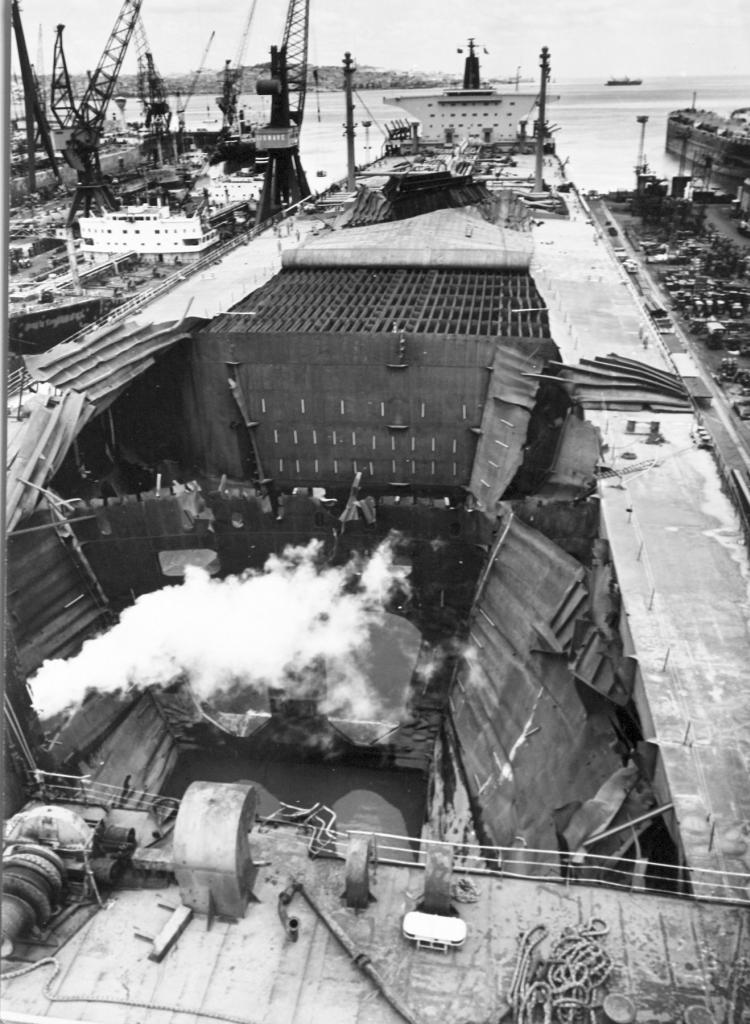Auke Visser's MOBIL Tankers & Tugs Site | home
Tank explosion "Mobil Pegasus (II)"
The Mobil Pegasus exploded in the South Atlantic on 21st June 1973 whilst changing ballast. 1C was being loaded with clean ballast. The pipeline ran through the double bottom and entered 1C facing upwards (rather than down-wards onto the bottom plates). Although there were baffles, the tremendous in-rush of water (and consequential static) when the Chief Mate opened the 1C valve must have ignited the explosive mixture in the tank. The plating peeled backwards like a sardine can virtually the width of the ship folding back upon the main deck. The hole in the deck extended from the centre castle to the break of the focsle. Fortunately, although we had many injured, there were no deaths mainly because of a fine Polish Doctor on a communist polish cargo ship that came to our help -- long story.
The fire was extinguished by flooding the forward tanks. Vessel limped back to Dakar for temporary repairs, and thence to Lisbon escorted by tug at 5 knots.
Mobil Oil had carried out tests a year before (on the Mobil Pegasus!) and knew about the dangers of static - unfortunately they failed to tell the mariners at sea. I know this because by luck I came upon (2 years ago) the American who carried out the tests.
The 1969 built, non-inerted double bottom VLCC survived and was repaired. This was used as evidence in favor of double hulls in the OPA 90 debate. In fact, there is no reason to believe that the double bottom made any difference structurally one way or the other. The unusual piping arrangement was probably a factor but this could have been easily countered by inerting. The Mobil Pegasus explosion is not an argument against double bottoms.
The Mobil Pegasus explosion is an argument for inerting.
|
|
Dear Auke,
I was surprised to see that you had photographs of the vessel after the explosion and I would like to confirm that I was on this vessel when it exploded.
I was an engineer officer the Fourth Engineer and was the officer of the watch at the time of the explosion.
After we had put the fire out and rebalasted the the ship I took these photos. I have the original of these and others I took at the time at my home.
These photos were sent to Mobil Oil Shipping Companies HQ for analysis and used to determine the condition of the vessel and hence if we could continue to sail using the main engines. We did so at around 2 knots.
The Captain Chief Engineer and Third mate stayed on board others left including wives on a Polish vessel.
Based on photos it was decided not to take Lloyds open form salvage and we had the Smit Lloyd tug ,the Sea Falke stand by us incase of a tow being required.
We then travelled at reduced speed to initially Walvis Bay but ultimately to Dakar for light repairs and then on to Lisbon Setnave.
There was additional fun as we had to steam back two days to have our stand by Tug take the P and O line vessel" Post Ranger " in tow as she had contaminated lube oil and the main engine and auxilliaries were damaged.
The Sea Falk took the Post Ranger in Tow.
Having arrived in Dakar a further event occurred in that a Swiss Registered Cargo vessel caught fire and was towed out from the harbour into the roads.
We did have some fun with the crew ashore they were well paid and happy.
I hope this is of interest.
Kind Regards,
Malcolm Foster
|
Photos : After the explosion.
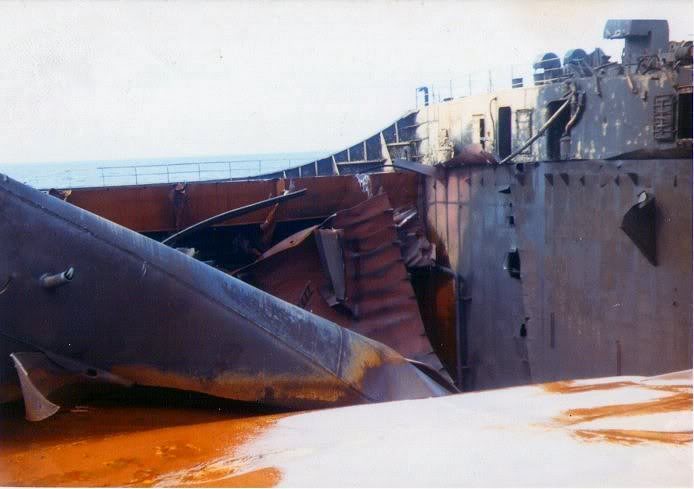
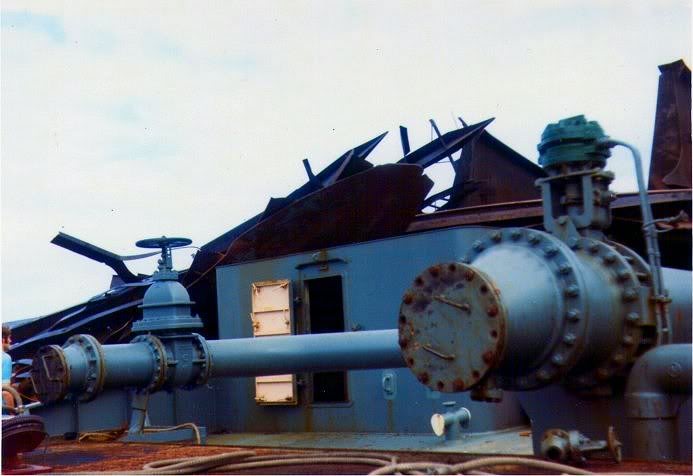
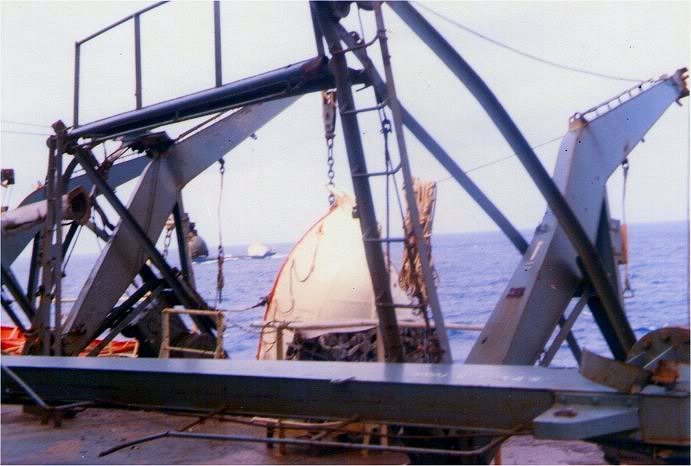
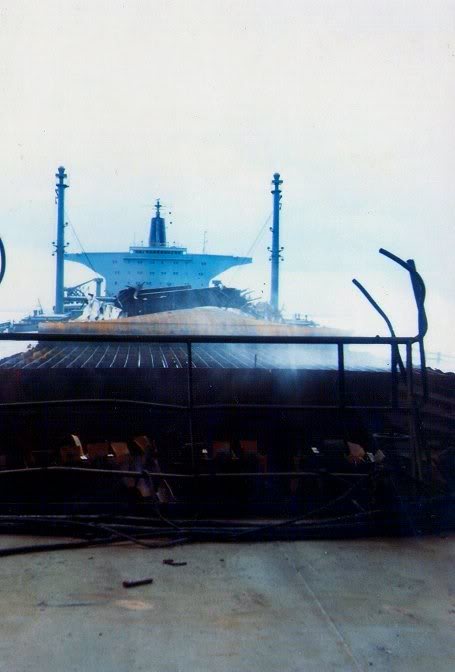
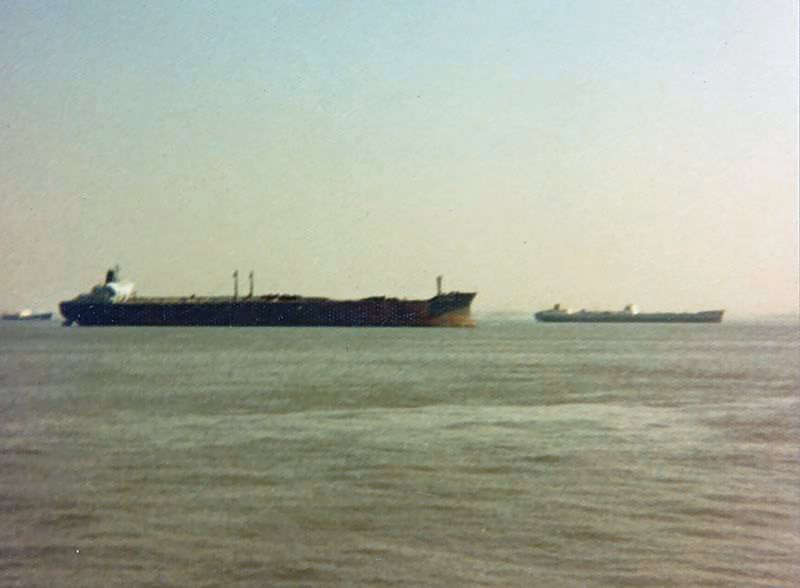
"Mobil Pegasus", arriving in Lisbon for repairs.
( All photos copyright Malcolm Foster )
